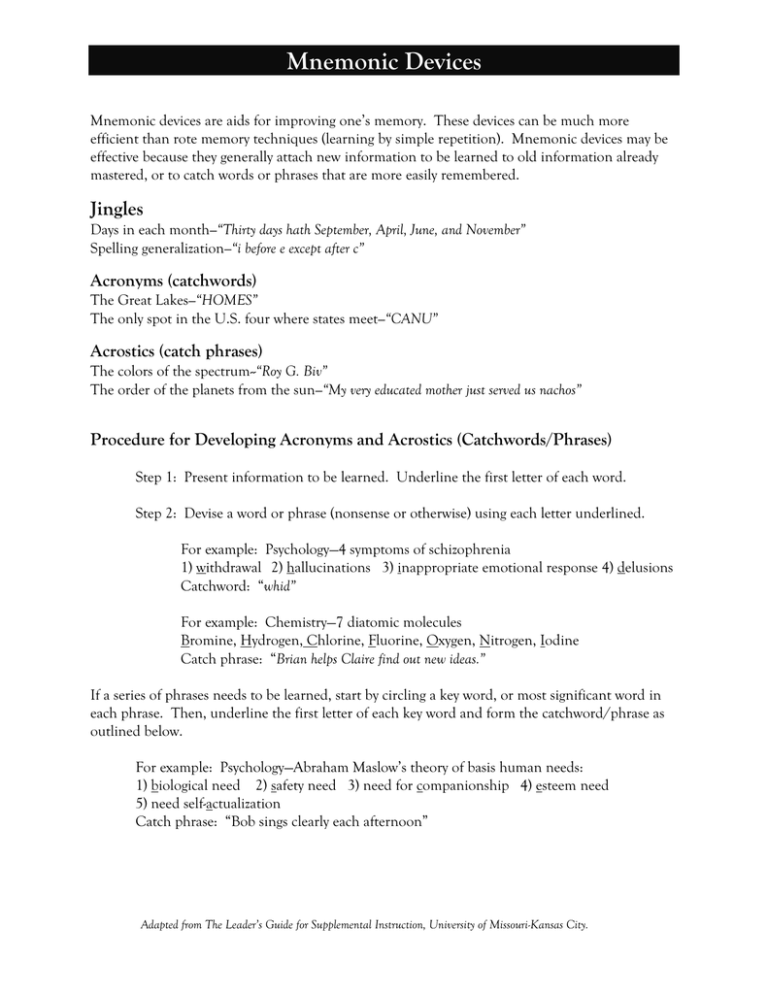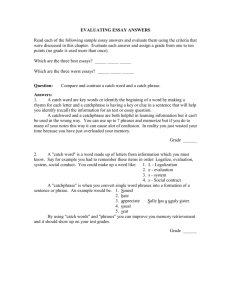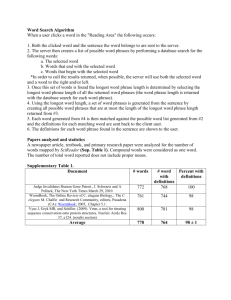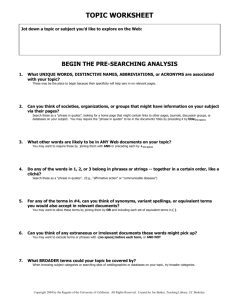Mnemonic Devices
advertisement

Mnemonic Devices Mnemonic devices are aids for improving one’s memory. These devices can be much more efficient than rote memory techniques (learning by simple repetition). Mnemonic devices may be effective because they generally attach new information to be learned to old information already mastered, or to catch words or phrases that are more easily remembered. Jingles Days in each month—“Thirty days hath September, April, June, and November” Spelling generalization—“i before e except after c” Acronyms (catchwords) The Great Lakes—“HOMES” The only spot in the U.S. four where states meet—“CANU” Acrostics (catch phrases) The colors of the spectrum--“Roy G. Biv” The order of the planets from the sun—“My very educated mother just served us nachos” Procedure for Developing Acronyms and Acrostics (Catchwords/Phrases) Step 1: Present information to be learned. Underline the first letter of each word. Step 2: Devise a word or phrase (nonsense or otherwise) using each letter underlined. For example: Psychology—4 symptoms of schizophrenia 1) withdrawal 2) hallucinations 3) inappropriate emotional response 4) delusions Catchword: “whid” For example: Chemistry—7 diatomic molecules Bromine, Hydrogen, Chlorine, Fluorine, Oxygen, Nitrogen, Iodine Catch phrase: “Brian helps Claire find out new ideas.” If a series of phrases needs to be learned, start by circling a key word, or most significant word in each phrase. Then, underline the first letter of each key word and form the catchword/phrase as outlined below. For example: Psychology—Abraham Maslow’s theory of basis human needs: 1) biological need 2) safety need 3) need for companionship 4) esteem need 5) need self-actualization Catch phrase: “Bob sings clearly each afternoon” Adapted from The Leader’s Guide for Supplemental Instruction, University of Missouri-Kansas City.






